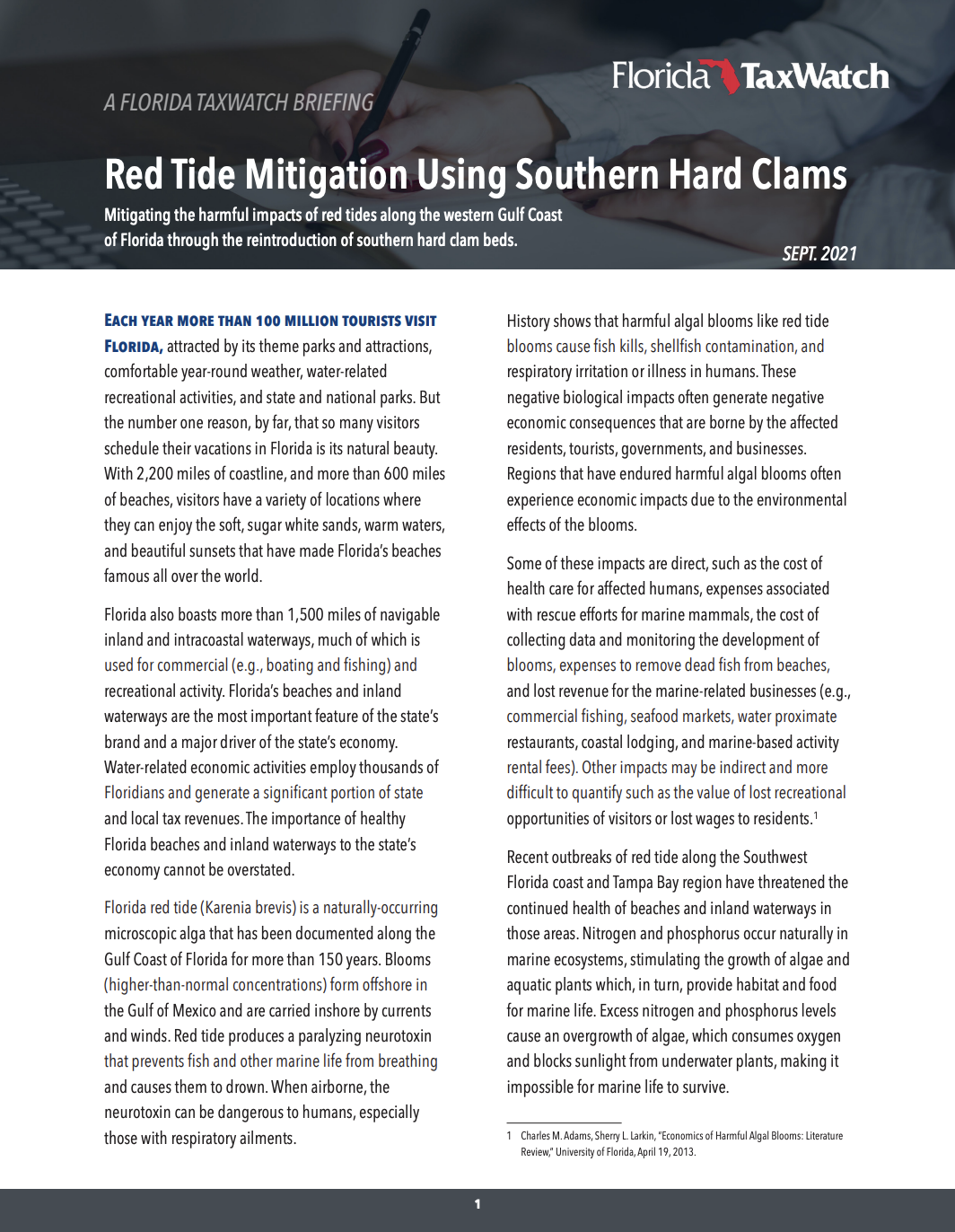Red Tide Mitigation Using Southern Hard Clams

Each year more than 100 million tourists visit Florida, attracted by its theme parks and attractions, comfortable year-round weather, water-related recreational activities, and state and national parks. But the number one reason, by far, that so many visitors schedule their vacations in Florida is its natural beauty. With 2,200 miles of coastline, and more than 600 miles of beaches, visitors have a variety of locations where they can enjoy the soft, sugar white sands, warm waters, and beautiful sunsets that have made Florida’s beaches famous all over the world.
Florida also boasts more than 1,500 miles of navigable inland and intracoastal waterways, much of which is used for commercial (e.g., boating and fishing) and recreational activity. Florida’s beaches and inland waterways are the most important feature of the state’s brand and a major driver of the state’s economy. Water-related economic activities employ thousands of Floridians and generate a significant portion of state and local tax revenues. The importance of healthy Florida beaches and inland waterways to the state’s economy cannot be overstated.
Florida red tide (Karenia brevis) is a naturally-occurring microscopic alga that has been documented along the Gulf Coast of Florida for more than 150 years. Blooms (higher-than-normal concentrations) form offshore in the Gulf of Mexico and are carried inshore by currents and winds. Red tide produces a paralyzing neurotoxin that prevents fish and other marine life from breathingand causes them to drown. When airborne, the neurotoxin can be dangerous to humans, especially those with respiratory ailments.
History shows that harmful algal blooms like red tide blooms cause fish kills, shellfish contamination, and respiratory irritation or illness in humans. These negative biological impacts often generate negative economic consequences that are borne by the affected residents, tourists, governments, and businesses. Regions that have endured harmful algal blooms often experience economic impacts due to the environmental effects of the blooms.
Some of these impacts are direct, such as the cost of health care for affected humans, expenses associated with rescue efforts for marine mammals, the cost of collecting data and monitoring the development of blooms, expenses to remove dead fish from beaches, and lost revenue for the marine-related businesses (e.g., commercial fishing, seafood markets, water proximaterestaurants, coastal lodging, and marine-based activity rental fees). Other impacts may be indirect and more difficult to quantify such as the value of lost recreational opportunities of visitors or lost wages to residents.
Recent outbreaks of red tide along the Southwest Florida coast and Tampa Bay region have threatened the continued health of beaches and inland waterways in those areas. Nitrogen and phosphorus occur naturally in marine ecosystems, stimulating the growth of algae and aquatic plants which, in turn, provide habitat and food for marine life. Excess nitrogen and phosphorus levels cause an overgrowth of algae, which consumes oxygen and blocks sunlight from underwater plants, making it impossible for marine life to survive.